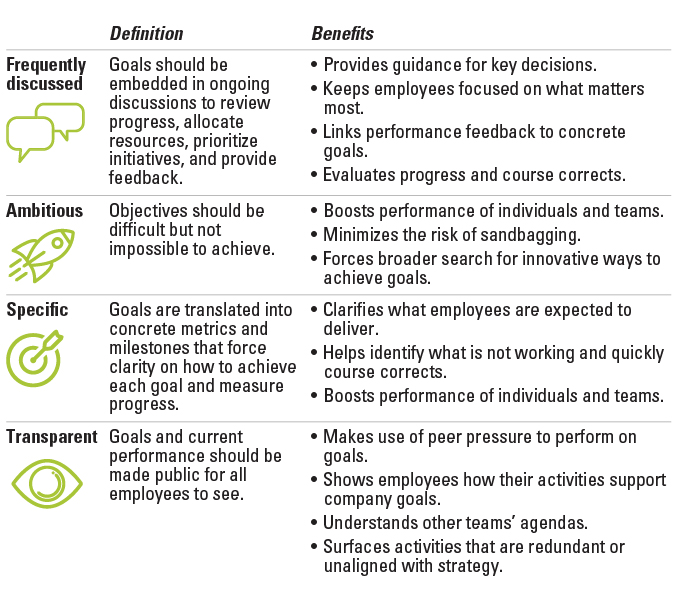It’s the start of a new year. You’re reflecting on what went well and what could have gone better – doing a retrospective. If you’re unhappy with the outcome of 2023, what behaviours should you change in 2024 to give you the outcome you would prefer?
Did you hit the growth targets you were aiming for? Did you get around to letting go of those underwhelming team members? Whatever last year looked like for you, now is the time to get ambitious about what you want to achieve over the next 12 months. Acknowledge what went well and what could have gone better. Learn and grow from it.
Streamlining operations is a continuous effort vital for business expansion. Your mindset throughout this journey is pivotal, often determining success or failure. Remember, the path may seem lengthy and solitary, but it need not be. Persistently taking small, focused steps towards your goal ensures that the rewards at the summit will eventually justify the climb.
Fortunately, thanks to the experience of rapidly growing two companies to £30m, I have condensed my key learnings into what drives real change. You can make a molehill out of a mountain just by tweaking your mindset and approach.
Implementing these processes will help you develop habits rooted in effective, result-driven methods. Are you ready?

1. Walking before running
Are you overwhelmed by the amount of work ahead? Yup, that’s normal. Let’s consider walking before running, or as Jim Collins calls it, bullets before cannonballs. The idea is that a cannonball represents a big bet, while a bullet signifies a small one. You want to make several small bets on the future to test ideas without committing too much. This way, you avoid the sunk cost fallacy and prevent zombie projects.
Test your ideas, see which bullets land, and then follow up with cannonballs for successful concepts. This approach encourages lightweight trials before committing resources and reputation to an idea.
Think about how atoms form molecules. Author James Clear coined this “atomic habits” concept – modest, consistent actions that yield impressive results.
If the usual standards have yet to equate to the results you need, increase the standards. Start this amongst senior management for them to lead the way before the companywide rollout. Once the new expectation has settled and workflows have been fine-tuned to meet the new expected behaviour, it will trickle down from the top.
2. Write To Make It Right
Now, let’s discuss making it right by advocating for six-month commitments. If you’re going to write things down, use a calendar and cross off tasks as you complete them. Don’t be too hard on yourself if you miss a day, but never miss two consecutive days. This mindset also applies to physical exercise – allowing yourself a break once but ensuring the habit remains consistent.
Forget the notion that a mere 21 days of consistent practice magically transforms a habit into second nature—that’s a load of bollox! Realistically, you’re looking at around six months for that seamless integration. If adopting new habits were a walk in the park, the world would be full of athletic individuals with no unhealthy vices…
What’s crucial is discovering ways to make it addictive; it’s how FitBits and Strava keep people accountable.
3. No rhythm means no routine
Moving smoothly into the concept of no rhythm meaning no routine, it’s essential to establish leadership rhythms that function before adopting them organisation-wide.
Routine is the oil to keep the cogs turning, and without this fundamental element in place, it’s only a matter of time before you see things slowing down or grinding to a halt.
Start with the executive team – daily huddles won’t be effective in your organisation if the executive team doesn’t participate. These rhythms might include daily huddles, weekly management meetings, monthly meetings with different agendas, quarterly one-day offsites, two-day annual events, and board meetings. Outside of the executive team, weekly team meetings and manager check-ins are also crucial for maintaining a healthy rhythm throughout the organisation.
Consider implementing a series of meetings across the organisation. When we notice a lack of clarity and performance, it’s essential to examine if there’s structure and rhythm in place. Often, poor performance and alignment stem from a lack of rhythm within the business. People may claim they’re too busy, but in reality, they might just be busy fools.
Invest 15 minutes for one-to-ones with each team member. This can significantly improve the overall structure and rhythm, leading to enhanced performance and alignment throughout the organisation. Remember, establishing a solid meeting framework is crucial for success and avoiding the trap of being merely “busy fools.”
Even minor interactions boost morale and productivity, compounding over months. It’s these elementary steps that accumulate to sustainable growth.
4. Clarity Trumps Conviction
Are you personally confident in the “why” behind each adjustment?
When discussing the term “why,” I prefer to use the word “purpose” instead of “clarity.” Often, we see a dip in team performance due to the absence of a clear purpose. Indeed, one of the six defining traits of a high-performing team is clarity of its purpose, which differs from the company’s purpose.
When you bring a team together, it’s essential for members to understand why they’re there and how their success will be measured. These two factors are crucial for performance. For instance, when it comes to check-ins or one-to-ones between managers and team members, research indicates that 85% of employee engagement is driven by their relationship with their manager. The 80-20 rule applies here.
As Jim Harter from Gallup suggests, if you only do one thing well, weekly check-ins – consisting of a 10 to 15-minute meeting between manager and employee – can significantly increase engagement. This meeting should focus on the team member’s achievements and praise for a job well done. For this to be effective, the team members must have clarity on what was expected of them that week and how to measure it.

5. Hook Into Existing Rituals
Incorporating existing rituals can be beneficial, too. For example, I habitually stand on one leg while brushing my teeth daily. Why? Well, if you’re over 65 and experience a fall, there’s a 16.5% chance you’ll die within the next year and a 40% chance within three years.
Falling is a significant predictor of mortality. Practising balance by standing on one leg while brushing your teeth helps improve stability and reduce the risk of falls.
Let’s consider improving your balance or learning to stay balanced for two minutes on each foot daily. It costs you nothing and takes no time at all.
Similarly, there are things in business that can be just as effective. For example, a client of ours wanted to implement daily team huddles. Noticing that their employees were in their cars at client sites between 8:30 and 9am, they timed huddles for then. Piggybacking onto that existing rhythm made the new routine easier. Look for similar opportunities in your organisation.
6. Celebrate Small Wins
Building a culture of praise by celebrating small wins is essential. However, avoid praising spurious things, as this can lead to cynicism.
Instead, track consecutive days of progress. At Rackspace, we implemented client health checks to reduce churn, and Anna used to reward her team with a Cadbury’s cream egg for completing tasks promptly. Sales teams would ring the bell every time they landed a new contract, creating a sense of achievement.
Time boxing is another fantastic technique. Encourage employees to complete tasks before checking emails and set mini-competitions throughout the day, such as the first person to generate a lead in every half-hour block.
Even minor victories merit recognition, tapping into the brain’s innate reward system and boosting morale to keep going.
7. Design For Alignment
Designing for alignment is crucial – core values should be clearly defined and communicated. Legends, one of our clients, has five core values with corresponding behaviours, all neatly presented on Notion.

You can design environments that draw out desired behaviours. Distil your vision into visual artefacts like core value statements and customer journey maps. Display these prominently around the office—repeated exposure imprints strategy into employees’ minds, which creates workplace unity.
Encouraging creativity? Consider chilled areas with reduced screens. Encouraging purposeful discussion? Install whiteboards promoting collaboration. Even lighting schemes subtly shift mindsets – bright lights energise, while dim settings relax.
The physical environment shapes behaviours, often without people even realising it. Be intentional about what vibe your space gives off and what behaviours they might reinforce. A cafe-style lounge area sparks innovation. An open floor plan enables transparency. As you walk the office space, what do you want employees to feel and do? Design accordingly.
8. Good News First
Starting meetings with good news sets a positive tone and deepens trust among team members. Sharing personal and business-related good news increases psychological safety and helps celebrate small wins. Team members might share news about family achievements or personal milestones, contributing to a supportive atmosphere within the team.
Small wins blend remarkably well; many of our clients have never experienced it. We incorporate it religiously in all our meetings, even when pressed for time. A quick round of good news sets the tone, and numerous clients adopt it as a part of their culture. There’s no downside.
9. Peer Power Pushes Progress
The concept of an accountability buddy is vital. Progress accelerates through partnership. When implementing corporate OKRs, we aim to break down silos. Most of the time, objectives and key results at a corporate level involve cross-functional collaboration. Instead of assigning it to just one person, several collaborators explicitly create an accountability group that ensures progress throughout the quarter or year.
Take my personal experience with an accountability buddy in a weight training programme, for example. We never trained together, but texting each other our achievements after each session significantly impacted our commitment to the agreed plan.
Leverage peer inspiration to energise development. But be wise in choosing compatible allies who bring out your best. The influence of close contact cuts both ways.
10. Gradual Gains Prevent Growing Pains
It’s worth noting that employees rarely complain about receiving too much praise for a job well done. In fact, one of Gallup’s Q12 questions asks if they were praised within the last seven days – so keep celebrating small wins! On the other hand, people often lament starting too many projects without finishing them.
If your working genius points towards tenacity as a frustration, you may be prone to ‘shiny object syndrome’.
We recommend using a tool like the Impact Filter from Strategic Coach to ensure clarity before initiating a project or initiative. This approach not only adds some necessary friction to the process, but also helps to define clear objectives and key results. Try implementing an Impact Filter alongside OKRs for improved project management.
Download the impact filter here
In terms of goal-setting, we prefer the FAST method over SMART goals. FAST stands for Frequent discussions, Ambitious scope, Specific milestones, and Transparency. By incorporating frequent discussions and transparency into your goal-setting process, you can reduce the likelihood of starting projects that never reach completion. This is crucial, as starting more projects than your team can finish is not only a waste of time and energy but also highly demoralising for everyone involved.
MIT Sloan Review image for SMART goals

To sum up, consider utilising tools like the Impact Filter and adopting the FAST method for goal-setting to improve your team’s efficiency and overall morale. Maintaining transparency and open communication throughout the project lifecycle is key to achieving successful outcomes.
Expect bumps – transformation is challenging. But stay consistent, praise progress and small wins compound into massive change.
Written by business coach and leadership coaching expert Dominic Monkhouse. Contact him to schedule a call here. You can order your free copy of his book, Mind Your F**king Business here.

